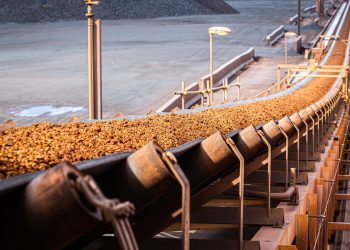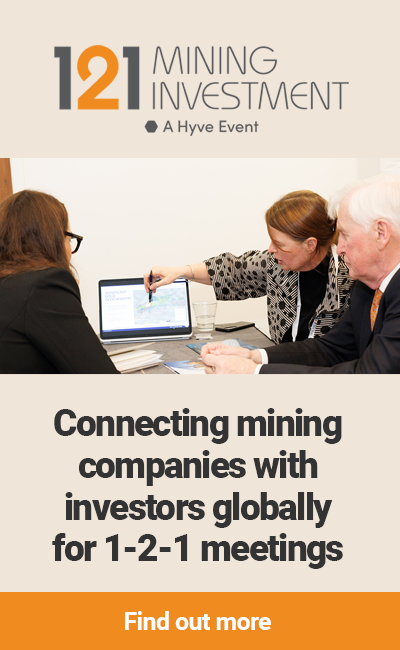Analysts around the globe have identified the importance of shifting to a decarbonized mining sector will bring climate reforms and progress towards net-zero emissions, engagement, and commitment.
They have also recognized that the mining sector is leading the way in integrating the use of decarbonization will assist in a major shift that is expected to bring climate reforms.
Dublin-headquartered information technology services and consulting firm Accenture, says the mining industry, long considered a problem in environmental sustainability, is now seen as a critical part of the solution.
“Investors and consumers alike are beginning to recognize the industry as not only the first source of emissions in the value chain, but a necessary provider of critical raw materials needed for the global energy transition,” the company states in a recent report titled How Investors View Mining’s New Role as a Champion of Decarbonization.
The report goes on to say that investors, along with other stakeholders, are sending a clear message that mining companies should focus their decarbonization initiatives on Scope 3 emissions.
Accenture says the mining industry has reached a unique juncture where its former image as environmental villain is being shed and replaced as champion of sustainability, principally through decarbonization.
Meanwhile, a global shift towards decarbonization is continuing to drive growth and optimism in the world’s mining sector, according to KPMG International’s Global Mining Outlook 2022.
The annual report, now in its 12th year, found that despite significant fluctuations, commodity prices remain at near all-time highs, driven by enormous growth in demand for minerals, including lithium, cobalt, and graphite – all essential components in the global decarbonization journey.
Global management consulting firm McKinsey & Company suggests that to address climate risk, mining companies can focus on three areas: which assets are most at risk from physical climate change; how decarbonization could shift demand for key minerals; and how miners can decarbonize their own operations.
However, the pathway to decarbonation success is not an easy one.
Challenging targets
Wood Mackenzie’s Julian Kettle, who is vice chair, metals and mining at the research and consultancy company, says that currently, the various decarbonization pathways under consideration create a desperate need to accelerate the supply of resources along the value chain.
“Paradoxically, this will lead to higher emissions, as we cannot decarbonize mining faster than we can grow supply –at least for the next decade,” he stated in the report Faster Decarbonization: Back to Basics for the Mining Industry?
“Of course, regardless of what happens in mining, under our current economic model growth makes the whole world go round. Convention has it that the global economy will continue to grow out to 2050; in fact, under our base case Energy Transition Outlook, Wood Mackenzie forecasts it to double in size between 2020 and 2050.
“This has dramatic implications for the need to decarbonize. Current CO2 intensity per unit of GDP is around 0.4kg, which should fall to 0.2kg by 2050. Under an accelerated 1.5°C pathway, carbon intensity needs to fall to less than 0.05kg per unit of GDP – an extremely challenging target.
“Given the immensity of the challenge, perhaps we need to take a different approach by addressing what is a relatively unconstrained consumption model. If global economic growth were to be constrained more than we are currently assuming, the knock-on effect would be a reduction in the need to lower CO2 intensity per unit of GDP. That should be more manageable for the whole supply chain. The shortage of metals and mining projects at the advanced stage necessary to meet an accelerated energy transition scenario would become more manageable.
“What I’m really saying is that we may need more time in the short term to get after faster decarbonization in the longer term. As I see it, an accelerated energy transition scenario within the timescales currently envisaged is at the extreme end of plausibility, if not impossible. Urgent action is needed to address this, and it starts with the basics – acknowledging that capacity in all areas of the development of primary mining, metals processing, and recycling infrastructure needs to be expanded,” he said.
Multinational professional services company Deloitte says operational emissions are largely within a mining company’s control and the most significant target for decarbonization within the industry.
“Although execution is always tricky, it is generally easy to see how it can be done. One exception is fugitive emissions from coal mining, where there are still no widely available, economically viable solutions for controlling methane leakage,” states the company’s report, The 2030 Decarbonization Challenge: The Path to the Future of Energy.
“Another exception is emissions from construction base materials, especially cement, where CO2 is produced as a by-product of the calcination process. Value chain emissions (i.e., Scope 3) are where it becomes harder. This includes upstream suppliers, which provide copper, steel, and vast amounts of concrete to construct the mine site as well as downstream customers who use base materials and metals to construct virtually every heavy-duty product in modern society, ranging from ships to bridges, cars to buildings, and much in between,” the report says.
Practical considerations
Deloitte says that the thorny part of decarbonization in mining, which involves tackling value chain emissions, requires partnerships and an ecosystem mindset. Forcing customers to use raw materials in ways that reduce emissions is counterproductive.
Partnerships of customers and suppliers who have the same goal is generally more effective. However, forging such alliances would oblige mining companies to collaborate with each other and with other players in the supply chain.
What is decarbonization?
According to Deloitte, decarbonization is the term used for removal or reduction of CO2 output into the atmosphere. Decarbonization is achieved by switching to usage of low carbon energy sources and is about reducing CO2 emissions resulting from human activity, with eventual goal of eliminating them.
The 2015 Paris Agreement set an ambition to limit global warming to well below 2°C above pre-industrial levels and pursue efforts to limit it to 1.5°C – in part by pursuing net carbon neutrality by 2050. The substantial reduction of global greenhouse gas emissions (including CO2) will limit the increase of global temperature.
In practice, getting to zero net emissions requires shifting from fossil fuels to alternative low-carbon energy sources.
Why is decarbonizing important?
Deloitte suggests decarbonization has become a global imperative and a priority for governments, companies and society at large, because it plays a very important role in limiting global warming. Many companies across all industries (e.g., in mining energy, transport, consumer products) have publicly declared their intention to become carbon neutral by 2050.












